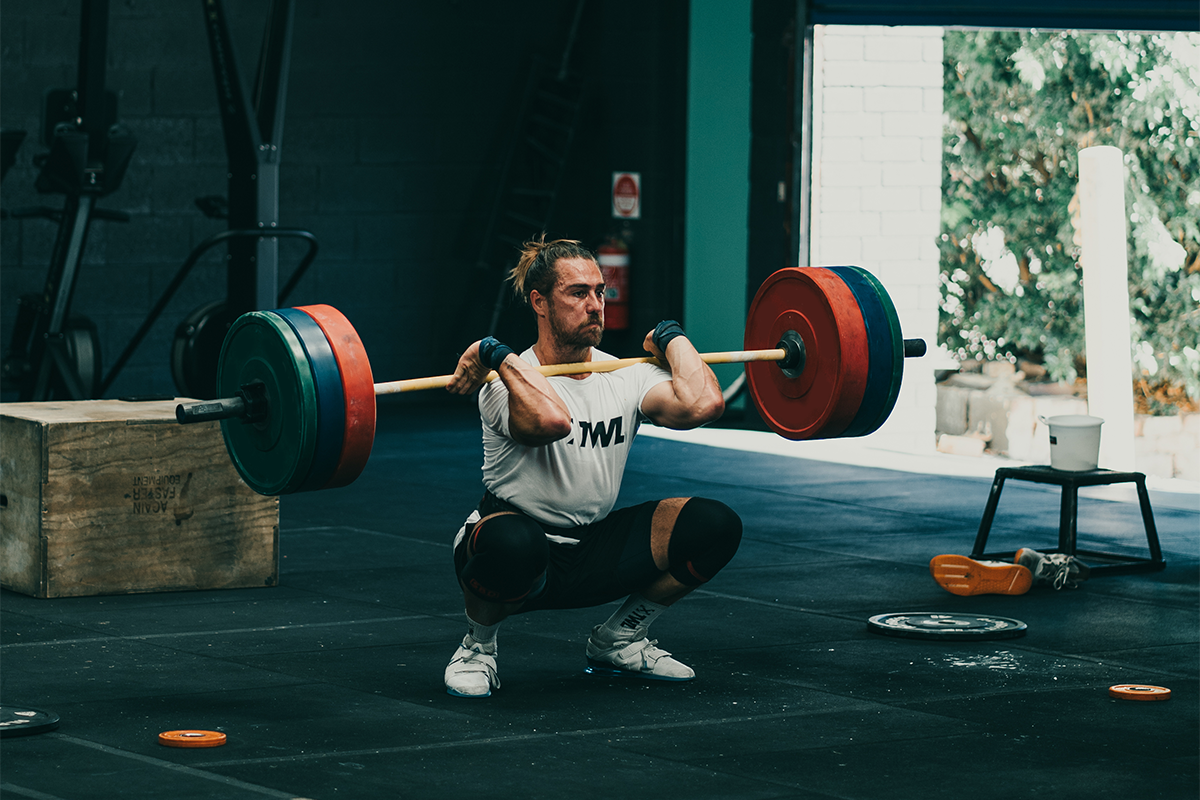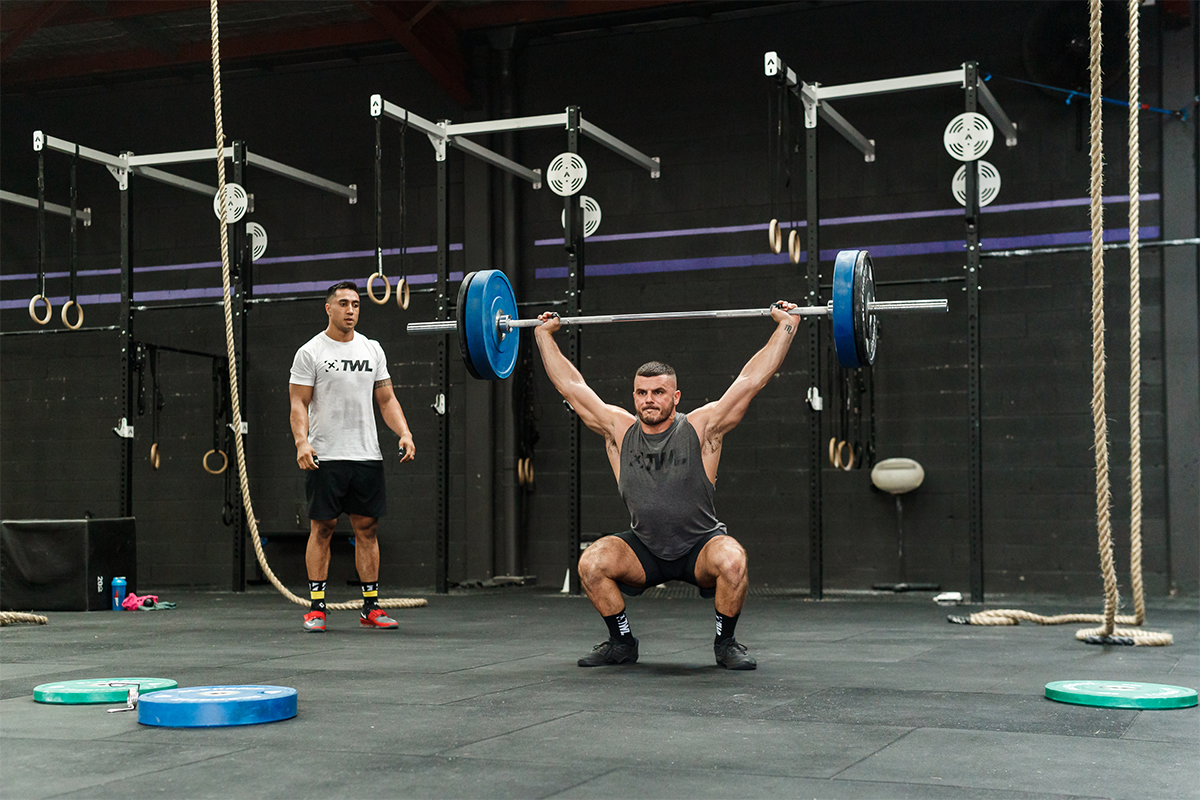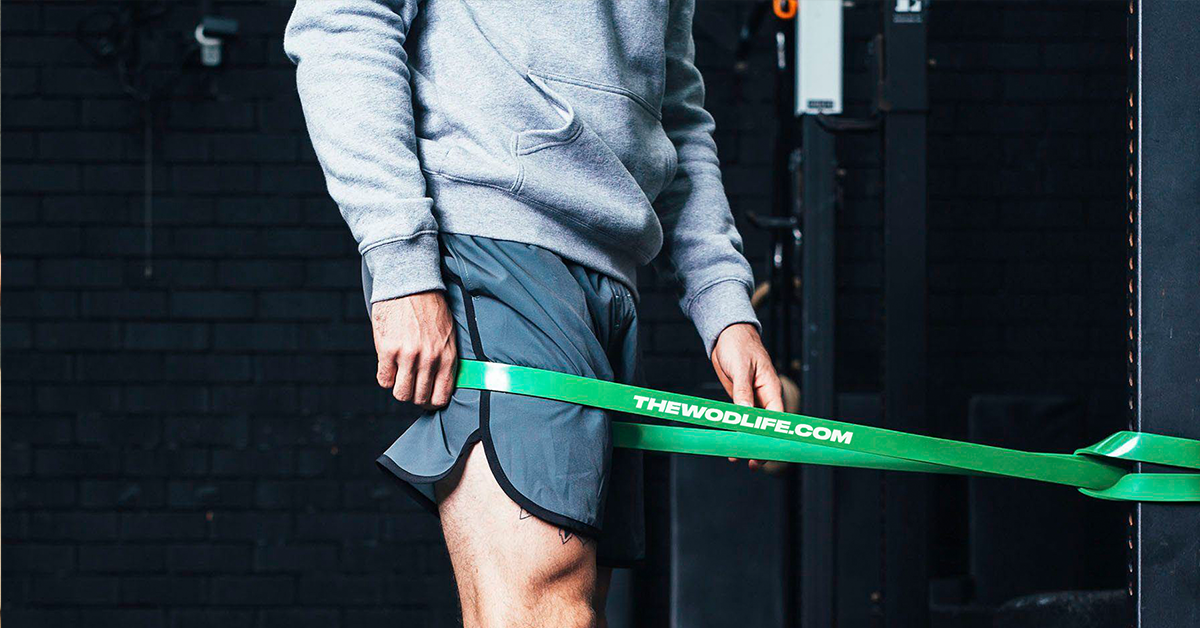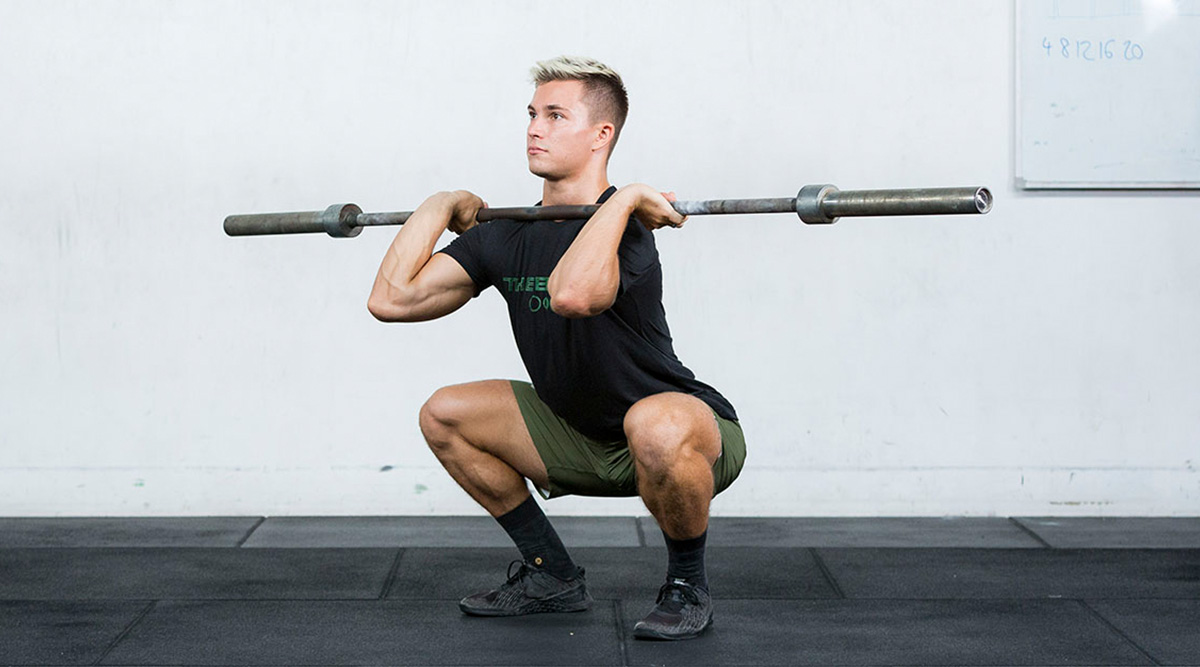Squatting seems simple enough. Sit your butt down and then stand up again, right? Yes, to an extent. Squatting is one of the pillars of functional fitness, and it’s something we do every single day — whether we realize it or not. Thus, if your squat mobility is suffering, pain and even injury can follow. Furthermore, problems with your hips can lead to problems with your knees, back, and beyond. So, how can you improve hip mobility for squats?
Let’s go over some of the best exercises you can do on a regular basis.
Improving Your Hip Mobility for Squats: 5 Exercises
One of the biggest reasons your hip mobility is suffering could be excessive sitting. Stretching out those muscles and putting them to work before you squat is important for avoiding injury.
Important note: Working on hip mobility for squats should not hurt. You should feel a stretch and maybe slight discomfort. But if pain occurs, stop and talk to your coach.
1. Goblet Squat Hold
This one looks simple, but don’t underestimate it.
Hold a kettlebell (or dumbbell) in front of your chest in the goblet position. Sit down into your squat and use your elbows to drive your knees outward. Hold this position for roughly 10 to 15 seconds and repeat for three to five rounds.
Yes, you can do this with nothing but the weight of your own body. However, adding the weight of a kettlebell or dumbbell forces your body to maintain the proper position and also helps build strength. This happens while it stretches out the muscles of your hips and hip flexors. That’s what makes this one so powerful. The muscles are required to stay activated in that specific position in order to support not just your body but the extra weight.
Remember: There is indeed a connection between immobility and muscle weakness!
Shop Now
2. Internal Rotations
You can tell if you’re lacking internal rotation if your knees and/or toes start to point inward as you squat down. Ideally, you can continue driving them outward throughout the duration of the squat.
Here’s a simple way to improve your hip internal rotation. Lie on one side with your legs bent at roughly 90 degrees, one stacked on top of the other. Keeping your feet connected, rotate the top leg so that the knee is pointing toward the sky. Some people call these clamshells.
As you get comfortable with these, you can increase the challenge by looping a mini resistance band above the tops of your knees. This will force those tiny muscles to engage and work harder, which will ultimately make it easier to maintain that outward hip rotation when you squat.
Shop Now
3. Couch Stretch
This one gets athletes sweating. If you want to improve your hip mobility for squatting, the couch stretch will come in clutch.
You can do this using — you guessed it — a couch, but all you really need is something to prop your back foot upon, like a chair, bench, or even the wall.
Get down on one knee, ensuring that your front knee stays aligned over your toe. Then, you’re going to lift the back foot and prop it up on the surface behind you. In this position, you should feel a serious stretch in the quad of the back leg and a little bit in the glute of the front leg.
The more your mobility improves, the further back you’re going to be able to push into the wall. If you’re having a hard time balancing, feel free to steady yourself with an object, as in the video above. Just be sure not to totally rely on it. A good trick is to only let your fingers rest lightly on it.
4. Foam Roller Exercises
The foam roller is your best friend when it comes to improving hip mobility for squats. There are several areas you’ll want to roll out:
- Achilles
- Calves
- Hamstrings
- Quads in the front (rectus femoris and vastus intermedius)
- Quads on the outside (vastus lateralis)
- Quads on the inside (vastus medialis — inside and slightly above your kneecap)
- Glutes (medius and maximus)
- Adductors
If you ever sit on a foam roller and it’s too intense, all you need to do is put your hands or elbow on the ground, prop your body up a little, and remove some of the weight. This should lower the intensity.
Foam rolling, like everything else on this list, is something you need to do regularly if you want noticeable, long-lasting results.
Shop Now
5. Pigeon Stretch
We love the pigeon stretch (or pigeon pose, for our yogis reading this) because it kills several birds with one stone. (See what we did there? Pigeon? Birds?)
One leg is going to be bent in front of you at 90 degrees. Think of keeping the knee and foot in line with each other. The other leg is going to stretch out behind you. The key thing to remember with the pigeon stretch is that your hips need to stay squared. In other words, if one is slightly more forward than the other, you need to adjust them so that as your knee and foot, they’re in line with each other.
This is another excellent exercise to target your piriformis muscle (in the glutes), which helps with external rotation and stabilizing the sacroiliac joint.
These five exercises promise to improve hip mobility for squats, but you must do them regularly! Use them as part of your warmup, and even consider incorporating them as part of your active recovery. While working on mobility might not seem as sexy as squatting 100kg, it’s mandatory if you want to stay healthy enough to train.
Ready? Let’s do it! Time to get to work.

















